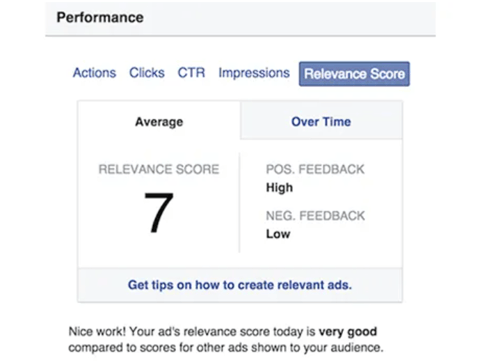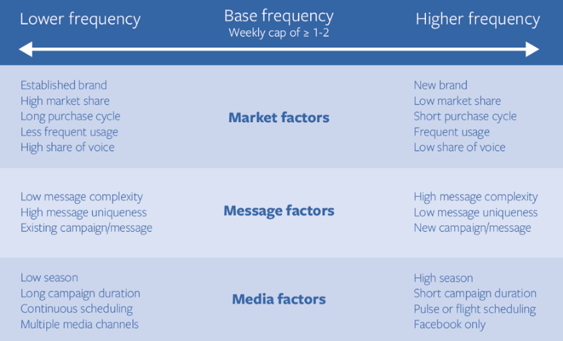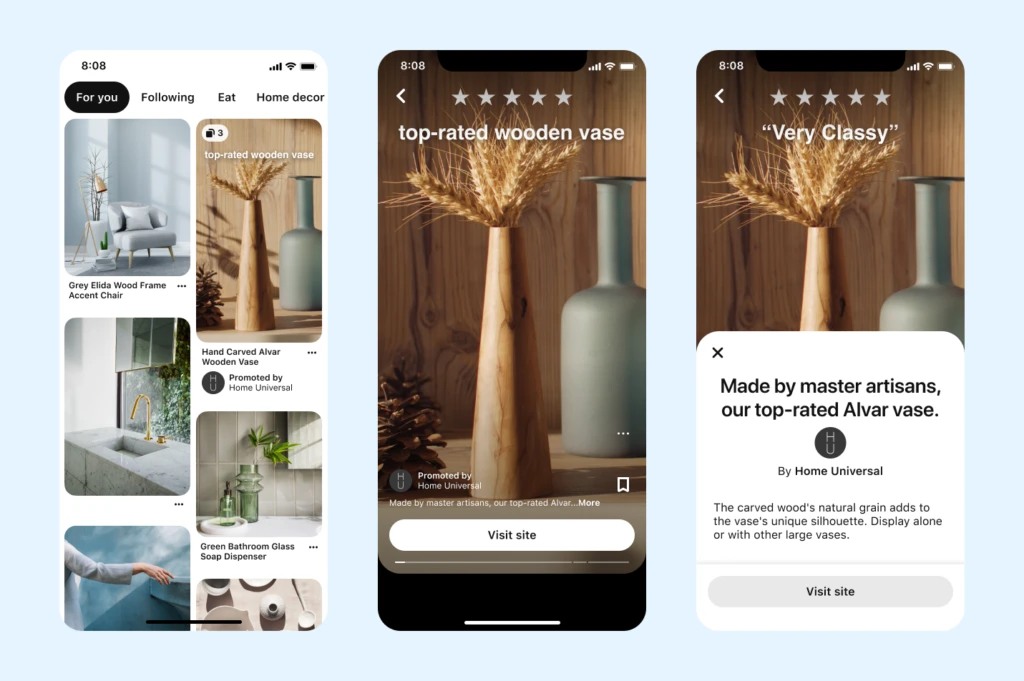Frequency Capping Best Practices For Facebook Ads And Google Ads
One of the main goals of eCommerce marketers is to make sure that the ads within their advertising campaigns are attractive enough and reach as many customers and prospects as possible. However, have you ever thought about how many times an ad should be displayed to the same person? Have you ever asked yourself how many times are too many times?
The answer to these questions lies in something called “Ad Frequency”.Whether we are talking about Google Ads, Facebook ads, or other social media ads, ad frequency refers to the number of times each one of the ads within your campaign appears to the same user over a specified period of time.
Some marketers and advertisers used to believe that the higher the ad frequency, the more successful the advertising campaign would be. Nevertheless, this way of thinking is long gone now because everyone is now aware that displaying the same ad to the same user repeatedly can negatively impact your campaign.
Fortunately, today, we have a technique that can help us deal with this issue. It is called “Frequency Capping”. A frequency cap is a limit that you place on the number of times your ad is displayed to the same user over a given period of time. Frequency capping is the process of doing that.
The trick is to know when it is time to start placing a frequency cap on your ads. You can learn to do that in the most effective way by reading this article, in which we will discuss some of the most important frequency-capping practices for Facebook Ads and Google Ads.
Table of content:
- Understand the difference between frequency capping in Display campaigns and Video campaigns.
Frequency Capping Best Practices For Facebook Ads And Google Ads
As we mentioned earlier, the Facebook frequency cap or the Google Ads frequency cap refers to the maximum number of times an ad can appear to the same user. If you don’t want your target audience to get bored of your ads and hide them, make sure you carefully read the following frequency-capping best practices for Facebook and Google ads.
Before discussing specific distinct practices for each channel, there are a few practices that work for both of them at the same time, such as the following:
1- Review Your Target Audience And Your Goals

Every strategy in eCommerce requires careful customer segmentation, especially when it comes to advertising. In addition to that, your goals always have to be well-defined from the very beginning.
To better illustrate, the frequency cap should be customized to the specific target audience of each advertising campaign. For instance, an ad targeting a young audience might be able to handle a higher frequency cap than an ad targeting older audiences.
Moreover, the goal of your advertising campaign is another crucial factor that should also be considered. For instance:
- If your goal is to build brand awareness and you are targeting users who are still not aware of your products or services, a high-frequency cap is recommended.
- If your goal is to retarget customers, re-engage website visitors, or drive conversions, a low-frequency cap might be more suitable to prevent ad fatigue for users who already know about you.
All this means that it is not very wise to have only one frequency cap for all your ads. Create different frequency caps for your goals, your different target audiences, and the different customer journey stages within each target audience.
Converted.in can help you with this. It offers you a very effective marketing automation tool that will segment your target audience without you having to exert any effort or waste any time.
2- Make Sure You Understand The Concept Of Frequency Capping
Just like everything else, frequency capping can get a bit complicated if not well understood. Now we are going to help you understand a few significant key terms related to the concept of frequency capping:
|
Term |
Description |
|
Cap Impression Frequency |
It simply refers to the number of times an ad in a campaign will be displayed to the same users. |
|
Cap View Frequency |
It is the number of times the ads within your campaign get views or interactions from the same users. |
|
Time Capping |
It is a form of frequency capping that limits the time frame in which an ad is shown instead of just limiting the number of times it’s shown. |
|
Dayparting |
Dayparting is a technique used to show ads at different times of the day when they will be most relevant to customers. This technique is more popular for pay-per-click advertising (PPC), but it can still be relevant to frequency capping. |
3- Implement Creative Rotation
Creative rotation is a technique used for ads with multiple ad creatives. Each time your ad serves, the creative rotation settings change the order in which the creatives are displayed to the user. For example, you might rotate your creatives in order. Or you might make sure one creative serves twice as often as the others.
This practice can help your advertising campaigns have a longer life before impressions begin to decline; hence, it can give you more time before you have to start placing a frequency cap.
4- Test And Measure
When it comes to the topic of frequency capping, you may find some controversy. In other words, the opinions of advertisers may differ regarding when you should place a frequency cap and when you shouldn’t.
So, even though we are discussing with you some of the good practices for frequency capping, the best practices are the ones you will figure out by yourself. The best way to do that is by regularly testing, measuring, and optimizing.
Best Frequency Capping Practices For Facebook Ads
In this part, we will take a few steps back from the general frequency capping practices and focus on the practices that are more suitable for Facebook ads.
-
Monitor Your Relevance Score
 Source: Facebook
Source: Facebook
The relevance score is a rating from 1 to 10 which is estimated based on the positive and negative feedback and response you receive from your Facebook ads. It shows how well your target audience is responding to the ads.
We can say that there is an inverse relationship between relevance score and Facebook ad frequency. In other words, when you notice that your relevance score is decreasing, this means that fewer people are seeing your ad, which might mean that your Facebook ad frequency is increasing to the extent that users are starting to lose interest and choosing to hide it.
Therefore, make sure you regularly monitor the relevance score of your Facebook ads and the engagements they are getting. If you start noticing that your relevance score is dropping, start placing a frequency cap.
-
Let Facebook Do The Work For You
If you are having trouble identifying your Facebook ad frequency and applying frequency capping, you can leverage the optimization options that Facebook offers. Facebook can optimize your ad frequency in different ways:
-
Daily Unique
If you choose this option, Facebook will serve your ad to the maximum number of people within your selected audience, but no more than once a day. In other words, this way your daily frequency will be limited to 1 per day.
However, choosing to set automatic frequency capping with the “Daily Unique Reach” option might have some drawbacks. It no longer optimizes your ad for an action, such as clicks, likes, comments, shares…etc. Therefore, you have to set your priorities straight and figure out which is more important for your campaign at the moment: impressions or frequency capping.
-
Evergreen Facebook Campaign
Evergreen Campaigns allow you to show a series of ads to a particular person, in order, for a specific number of days. What’s different about this campaign is that, if, during the campaign, a user converts, he or she will be excluded and won’t be targeted again. As for users who don’t convert within a designated number of days, they fall out of the campaign.
- Monitor The Market, Message, And Media Factors
- Market Factors: These factors include the novelty of your brand, your market share, the length of the purchase cycle, the frequency of usage, and the share of voice.
- Message Factors: These factors include the level of message complexity, the level of message uniqueness, and whether your campaign and message are new or old.
- Media Factors: These factors include the season, the campaign duration, the scheduling, and the media channels.
The following chart will help you make decisions about frequency capping based on these three factors.
Best Frequency Capping Practices For Google Ads
The best practice you can follow while applying frequency capping for Google ads is to understand that frequency capping works differently on Display campaigns and Video campaigns.
- Display Campaigns: With Display ads campaigns, setting a frequency cap means you are limiting the number of impressions you will allow a user to have on your ads per day, week, or month. Also, here you can apply frequency capping on the campaign level, ad group level, or ad level.
- Video Campaigns: With Video ads campaigns, setting a frequency cap means you are limiting the number of impressions and/or views you will allow a user to have on your videos in your campaign per day, week, or month. Here, you can apply frequency capping only on the campaign level.
Final Thoughts:
To sum up, as an eCommerce marketer, you have to always keep the frequency capping technique in your mind. Whether you are advertising on Google, Facebook, or other channels, frequency capping will come in handy when you want to prevent ad fatigue.
You also have to keep in mind the wide range of tasks that the marketing automation tool offered by Converted.in can help you with. We already mentioned that it can help you segment your target audience. Additionally, it can do the following:
- Create, customize, launch, and automate personalized ads, SMS, and email marketing campaigns.
- Gather your customers’ data, which may be scattered across different places, into one place, like a hub.
Book your demo now and start allowing automation to help you with your frequency capping strategies.
 By
By



